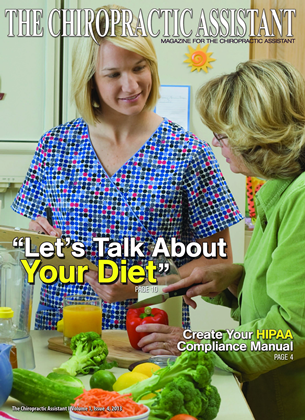W hy do chiropractors attend seminars other than those for CEUs? What are they seeking? The surveys I have seen generally list the same five desires: More patients Better results More referrals Higher income More respect/recognition within the community To achieve these goals I believe you will need three key ingredients: First, any hospital administrator will tell you that the money in clinical practice is in the di agnosis, not the treatment. So you will need an examination that identifies EXACTLY the cause of the patients' symptoms. Unfortunately, most clinicians treat symptoms that more often than not are related to compensations, thus missing the underlying cause. Second, you must have absolute confidence that your examination will stand the light of scientific scrutiny and therefore can be justi fied. And it must yield information quickly and accurately. Third, you need a ceremony surrounding your examination to both educate and inspire the patient. In other words, a special exam, in a special room, at a special time, with a special assistant (note taker), at a special price. To be successful you must know, find, and treat the exact cause—not the defensive, compensatory reactions of the body. RUN MORE TESTS because ONCE THE CAUSE IS KNOWN THE TREATMENT BECOMES OBVIOUS! Most forms of therapy for non-life-threatening problems are successful about 80% of the time. Even if the patient does not seek care! Therefore, to stand out from the crowd you must be able solve the other 20% of cases no one else has been successful with! For example, I recall a patient who was being treated for muscle-tension headaches and vague low back complaints. The physical examination and x-rays had not revealed pathology and a plan including recommended exercises was devised. This plan worked quite well, but, unfortunately, the chief complaint usually reoccurred within a few days of an office visit. Over several visits we searched for a causative factor, including the possibility of a dietary cause, but there seemed to be no reasonable explanation. Then prior to what I expected would be another fruitless and frustrating attempt to help this patient, my receptionist came to the rescue. It seems she frequently had breakfast at the same time and in the same establishment as the patient. She reported that the patient, despite repeated denials of high simple sugar consumption, usually had two chocolate-covered doughnuts with his coffee. The cause of the low back muscle tension, loss of normal thoracic kyphosis, and frequent muscle tension headaches was quite obvious and no amount of chiropractic treatment, exercises, and counseling was ever going to be effective until the patient made some dietary modifications. Think about this for a moment: Any time the available glucose supply is low, the body switches into stress mode! This may be transitory (and symptom-productive) or may become chronic because of consistent dietary imbalances. How many hypoglycemic patients do you see? And how many of them are chronic? Recall that there are two types of hypogly- cemia: Functional, which has few symptoms and is related to protein problems—either inadequate intake or inadequate digestion. Reactive, which has an overwhelming number of symptoms and is related to carbohydrate problems—either inadequate intake or inad equate digestion. Both conditions will cause muscle contractions in the mid-thoracic spine, the area of spinal innervation to the organs of digestion as well as the liver, spleen, and adrenal glands. But any reduction of available glucose to meet energy requirements will cause muscle contraction within the mid-thoracic area of the spine. The stress response always causes vascular constriction, includingtothe kidney and muscle contractions in the dorsal-lumbar spine! Problem solved. When under stress, each cell, tissue, organ, and organ system requires more nutrition, and glucose in particular, to produce the energy needed to meet the demands being placed on it. The so-called "fright, flight, or fight" response is well documented, but what is not well known is that it is only evoked when the body does not have an adequate supply of glucose and stored glycogen to meet the emergency! When that happens the body switches to converting fat for energy production and saves its glucose for the brain. All patients want to improve their health, get value for their dollars spent, and feel better. Most are aware that better nutrition is needed in our society, and most believe that they need better nutrition themselves. Few patients, however, know how to achieve a better nutritional plan. That is why they need you. Who betterto guide them to a better lifestyle? Should they get their information from a nutritional supplement store or from you, the expert? You should have no problems interesting them in the simple program that we teach. The program simply sells itself, but you need an informed staff, who are part of the healing team and usually know more about the patients, their lives, and families than the doctor. Dr. Howard Loomis has an extensive background in enzymes and enzyme supplements. He is the founder and president of Enzyme Formulations®, Inc. His knowledge of physiology, biochemistry, and enzyniology has made him a sought-after speaker and a prolific writer. Dr. Loomis published ENZYMES: The Key to Health in 1999. Contact info: 6421 Enterprise Lane, Madison, WI 53719, citstomerservice(3)Joomisinstitute.com
 View Full Issue
View Full Issue












